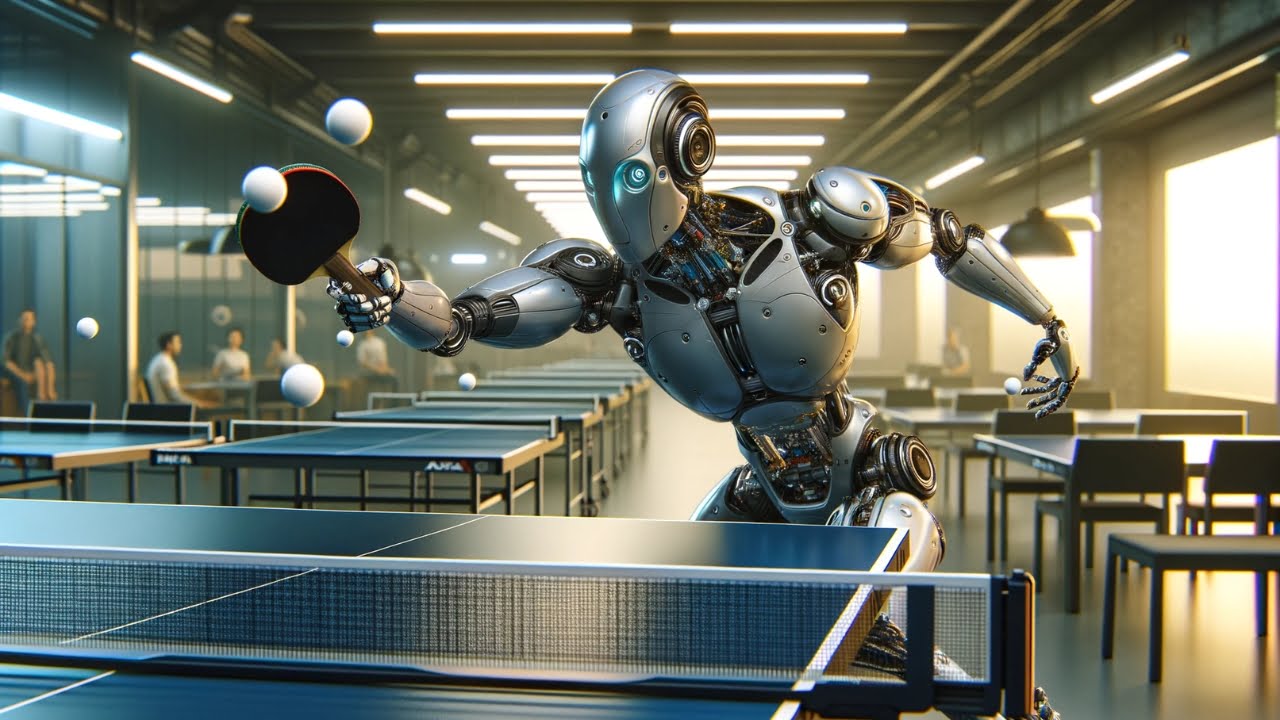Imagine playing a competitive game of table tennis and finding your opponent is a robot. Google DeepMind has achieved a significant milestone in robotics by developing a robotic arm capable of playing table tennis at an amateur level against human opponents. This innovation marks the first time a robot has been trained to compete in a sport at a human level.
Training The Robot: A Two-Part Approach
To become a competent table tennis player, the robot needed to master skills typically requiring excellent hand-eye coordination, rapid movement, and quick decision-making. Google DeepMind’s researchers employed a two-step process to train the robot.
Initially, they used computer simulations to help the robot learn basic skills, such as returning serves and executing forehand and backhand shots. These simulations were based on a dataset of table tennis ball states, including information about the ball’s position, spin, and speed.
Once the robot had mastered these skills in a simulated environment, researchers fine-tuned its performance using real-world data. This allowed the robot to improve over time as it faced various human opponents. During matches, the robot continuously collected data, adjusting its tactics and behavior to better compete, similar to how a human player would adapt.
Limitations And Real-World Applications
Despite its impressive capabilities, the robot is not without its limitations. It struggled with fast shots, balls hit beyond its field of vision, and those with significant spin. These challenges highlight the complexity of training a robot to handle the unpredictability of real-world scenarios. However, Google DeepMind’s is optimistic that these limitations can be addressed with advancements in AI models and better collision-detection algorithms.
While the robot’s table tennis skills are impressive, the broader implications of this research are even more significant. Google DeepMind’s approach to training robots has potential applications far beyond sports. It represents a step toward creating robots that can perform useful tasks in real-world environments, such as homes and warehouses. The ability to train robots to interact safely and effectively with humans is a crucial goal for the robotics community.
The Human Experience
Interestingly, human players enjoyed their matches against the robotic arm, with some advanced players expressing interest in using it as a practice partner. This positive feedback underscores the potential for robots to serve as dynamic and engaging tools in various settings, from sports training to daily tasks.
As robotics technology continues to evolve, innovations like Google DeepMind’s table tennis robot bring us closer to a future where robots seamlessly integrate into our lives with skill and safety.
Resources:
Google DeepMind
Video: Google DeepMind on X
arXiv: Achieving Human Level Competitive Robot Table Tennis
Forbes: Can AI Score Big In The Future Of Sports? Five Key Trends Shaping The Industry
References:
MIT Technology Review: Google DeepMind trained a robot to beat humans at table tennis
TechCrunch: Google DeepMind develops a ‘solidly amateur’ table tennis robot
Futurism: Google Shows Off Robot That It Says Plays Ping Pong as Well as a Human








